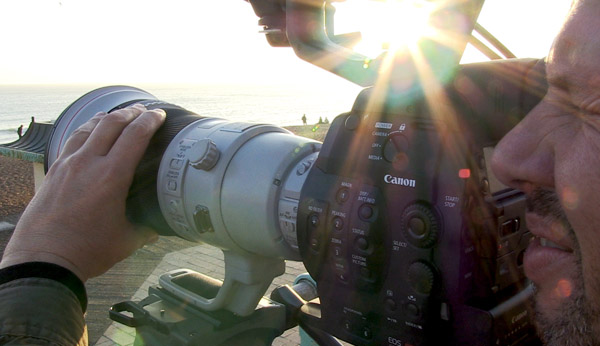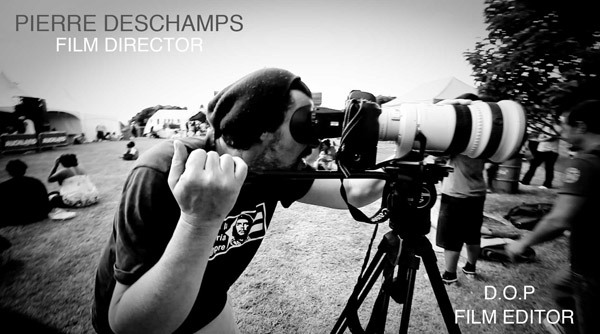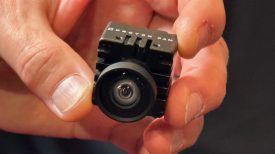By Pierre Deschamps
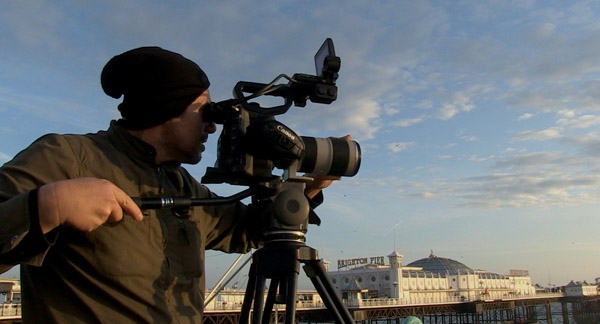
I am a director, shooter and editor who started working with the Canon 5D mkII in December 2008. I made my first short documentary called “Man of the Soil” in February 2009; it was accepted in more than 20 international film selections. It won an award for Best Short at the IFFF 2011 International Forest Film Festival, Best Editing at the SilaFest International Film Festival and a special motion for Best Cinematography at the Barbados Bridgetown International Film Festival.
Man of the soil – Best short film award IFFF 2011 from Deschamps Pictures Ltd on Vimeo.
I have been always interested in framing – doing still photography from a young age and then doing 8mm filming. It is what I see on my display or viewfinder that moves me even if it isn’t technically perfect – as long as the emotion is there. I am an intuitive shooter who reacts with feelings. Story content combined with quality footage works for me.
When the rumours of the 5D mkII came out I knew it that it was a device for me. I didn’t care about the limitations of the camera compared to professional video cameras. I was pleased with it – it had the Wow effect. Together with the wide range of Canon EF lenses it was a blessing.
My latest work with the 5D mkII is a 52 minute documentary about New Zealand rugby called “Rugby: the Lifeblood of New Zealand”.
It was entirely shot with the 5D mkII combined with lenses from 15mm fisheye to 600mm super tele. I gathered 2.9 TB of footage before it was converted to Apple Prores 422 HQ. Canon Europe was one of the main contributors to this film, together with Zacuto and Kessler Crane.
So far the film has been be broadcasted worldwide on Canal Plus, Discovery Channel, ESPN Classic, TV Globo.
My new Documentary’s trailer by Canal + from Deschamps Pictures Ltd on Vimeo.
Recently I collaborated with Canon Europe at the Visa pour l’Image photo festival in France. When Canon ask me if I wanted to test and create content with the new EOS C300 I was thrilled. It was going to be launched in Hollywood and I was eager to see what it was about. I arranged to shoot with the camera in the seaside town of Brighton.
My test with the new Canon EOS C300 test from Deschamps Pictures Ltd on Vimeo.
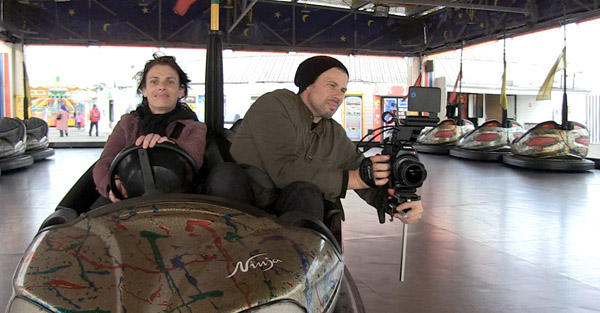
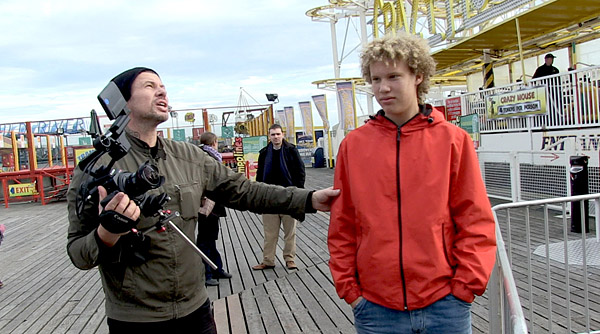
Coming from using HDSLR I hoped that it would overcome some of the 5D mkII’s shortcomings. In general it does just that. We came up with idea to do a shoot that was basic plug and play. Trying to take the camera straight out of the box, put a battery in, a lens on and rock. I shot it all just over a day due to weather conditions.
Of course this shoot was nothing in comparison to all the big high end Hollywood set-ups films that were shown at the launch on November 3rd, nor the smaller 15 man team of Sébastien Devaud, who also did a great work for the European launch film.
I didn’t have the same goal. My interest was in getting specific answers as a documentary shooter. I was on my own for a day. I wanted to see how this camera would react on a shoot. Would it fit my one-man configuration in my future projects. Would I be able to work with this camera and combine it with a lightweight rig and would all the technical stuff work flawlessly?
The simple answer was yes. To find the built-in ND filters was a joy. The dual XLR audio connections was a relief after using DSLR. The peaking and zebra functions were a real comfort and the magnification button was great.
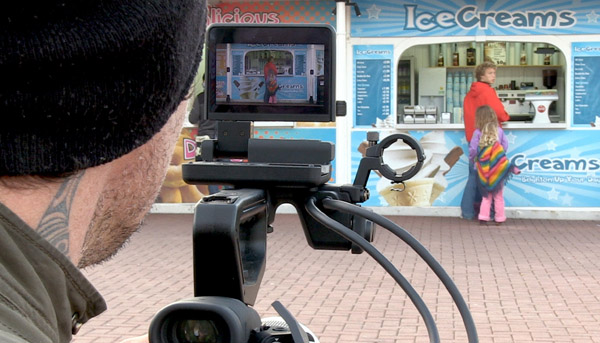
The bolt-on display is very good and efficient and the built-in viewfinder being in a central position was easy to use. I tested the camera with the top handle as well and found it practical for some shooting situations. The handgrip turned out to be very useful and I made many handheld shots with the EF 70-200mm f2.8L. This combination gave me great pleasure and great stability. Adding in a modified Crossfire rig from Zacuto made it even easier.
The camera responded very well to both highlights and lowlights, from the early morning sun to night-time shots mixing a dark sky and the lights of the Brighton Pier attractions. Pans, wide shots and close-ups all looked fine.
I was very pleased with the picture quality even if it took me some time to get used to it instead of my regular 5D mkII.
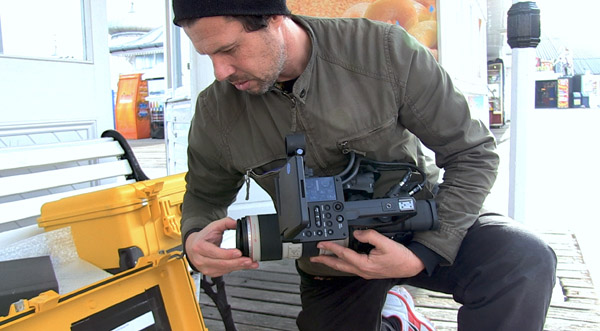
In documentary it is almost impossible to prepare each shot as you would do in fiction – you have to go with the flow and capture the situation as it unfolds. This is exactly what I did on that shoot that day. I had to forget the settings and leave it to the camera at some points just to get the shots.
The Post-production was also a plus for me coming from the 5D mkII. I simply popped the CF card into a card reader on my iMac. The native 50Mbps MPEG-2 MXF recording (4:2:2) footage is rapidly ingested onto Final Cut Pro 7 using log and transfer. Editing was native and the output either native or in Apple ProRes 422 HQ.
I am very pleased so far and look forward to running further tests with this camera. For me it is pleasing to be able to forget about some of the technicalities and focus on creativity instead. Quite a change from DSLR shooting.
I am personally looking forward to working with the PL mount version together with the PL lenses. In future I will also try using the Canon Log and benefit from the dynamic range associated with it, offering greater possibilities in post-production.
In short, the C300 reached my expectations.
You can see more of Pierre’s work on his website.

